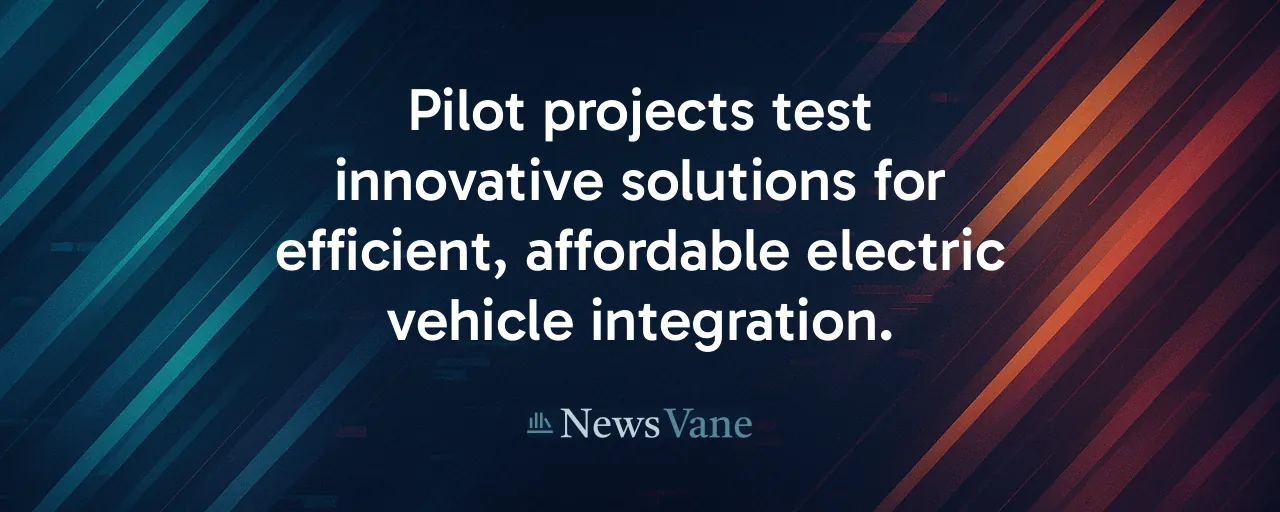A Surge in Electric Ambition
New York is charging toward a cleaner future. On July 8, 2025, Governor Kathy Hochul announced a $7 million investment to integrate electric vehicles (EVs) into the state's power grid more effectively. This includes $3 million for three pilot projects and $4 million for new research to tackle data and operational hurdles. These efforts aim to make EV charging smarter, cheaper, and less taxing on the grid.
The announcement signals a broader push to rethink how EVs interact with the state's energy system. With transportation as a major source of emissions, New York aims to ensure its grid can handle a growing fleet of electric cars, trucks, and buses while keeping costs down for consumers and utilities alike.
Why Smart Charging Matters
Electric vehicles are gaining traction, making up about 6 percent of new car sales in New York. Without careful management, widespread EV adoption could strain the grid, especially during peak hours. Unmanaged charging might add up to 15 gigawatts of demand, equivalent to powering millions of homes. Smart charging could cut that to under 6 gigawatts by shifting when and how vehicles draw power.
The state's plan focuses on technologies like bi-directional charging, which lets EVs send power back to the grid, and managed charging software that schedules charging for off-peak times. These tools aim to balance energy loads, reduce the need for costly grid upgrades, and integrate more renewable energy like wind and solar.
Innovators Leading the Charge
Three projects are at the heart of the $3 million investment. Voltpost, awarded $775,000, is developing lamppost-based chargers in New York City and beyond, offering a creative solution for urban areas where space is tight. The Mobility House, with $867,000, is piloting flexible interconnections for electric school bus fleets, allowing faster charger deployment without waiting for major grid upgrades. Weave Grid, receiving nearly $1 million, is using software to optimize charging schedules in Orange and Rockland Utilities' service area, easing grid pressure.
Separately, the $4 million solicitation, with proposals due September 16, 2025, seeks solutions to give utilities real-time control over charging. This could unlock significant savings by reducing peak demand and deferring expensive infrastructure projects.
Balancing Costs and Benefits
The economic stakes are high. New York's $7 million is a fraction of the nearly $3 billion it plans to spend on transportation electrification. If successful, these pilots could save hundreds of millions by avoiding substation upgrades. Studies from Columbia University suggest that coordinated charging, paired with 40 percent renewable energy, could cut distribution costs by 20 to 40 percent.
Challenges remain. Rapid charger build-outs could raise utility bills for non-EV owners if costs are not carefully managed. Equitable access is another concern, as urban areas might see more chargers than rural counties without deliberate planning. Transparent cost tracking and community-focused programs are essential for ensuring broad benefits.
Lessons From the Past
New York's efforts build on a decade of groundwork. Since 2013, programs like Charge NY and the Drive Clean Rebate have spurred EV adoption. In 2020, the state launched a $750 million utility Make-Ready framework, followed by a $60 million loan for fast chargers in New York City earlier this year. These steps show a commitment to testing and scaling what works.
Nationally, research from the National Renewable Energy Laboratory highlights the potential of bi-directional charging. For example, electric school buses could provide up to 70 hours of backup power to local grids, offering a model for other states to follow.
A Broader Vision for Energy
New York's investments align with its goal of zero-emission light-duty vehicles by 2035 and a net-zero electric system by 2040. The state's approach goes beyond EVs. By prioritizing open data standards and flexible grid solutions, it aims to create a system where any low-carbon technology can thrive, from hydrogen vehicles to community-owned chargers.
This vision requires cooperation. Utilities, automakers, and local governments must work together to standardize data and align incentives. Rate designs that reward off-peak charging, paired with performance-based rebates, can encourage participation while protecting consumers on fixed incomes.
Looking Ahead
New York's latest funding is a calculated step toward a more resilient energy future. By tackling grid challenges now, the state hopes to avoid the growing pains of rapid EV adoption. Success hinges on high participation, clear communication, and policies that prioritize affordability and access for all.
The pilots and research funded today will generate valuable data, shaping how utilities and drivers navigate the shift to electric. If executed well, these efforts could make charging as seamless as filling a gas tank, while cutting emissions and costs.
As New York charts this course, its experience offers lessons for other states. A smarter grid, powered by innovation and collaboration, could redefine how we move and how we power our lives. The road ahead is electric, and the state is determined to keep the lights on.
